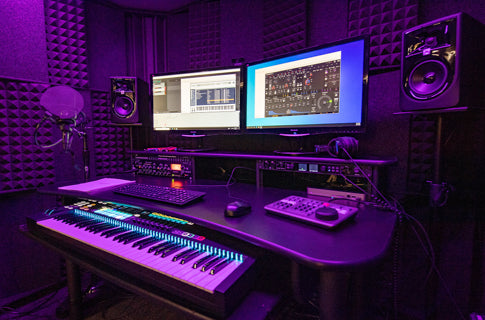
How to make music: Basic Steps to get started
Share
Getting started making music can be an exciting and rewarding experience. Here are some steps you can take to get started:
-
Choose your tools: You will need some equipment to create music, such as a computer, a digital audio workstation (DAW) software, a keyboard or other MIDI controller, and/or a microphone.
-
Explore different music styles: Listen to a variety of music styles and genres to help you determine your own musical preferences and influences.
-
Learn the basics: Study music theory, chord progressions, and song structures to understand the foundation of music.
-
Start experimenting: Use your DAW software or instrument to experiment with different sounds, chords, and melodies. Try creating simple loops and beats to get a feel for the software or instrument.
-
Collaborate: Connect with other musicians or producers in person or online to collaborate on projects and learn from each other.
-
Keep practicing: As you become more comfortable with your tools, continue to practice and improve your skills. Try new techniques, work on new projects, and never stop learning.
-
Share your music: Share your music with others by uploading it to online platforms, playing it for friends and family, or performing it live.
Remember, making music is a lifelong journey and the more you practice and experiment, the better you will become. Have fun and be creative!
Other advices:
-
Choose a musical style: Determine the type of music you want to make, such as hip-hop, rock, pop, electronic, etc.
-
Get an instrument: You can start with a basic instrument like a keyboard, guitar, or drum machine, or you can use a digital audio workstation (DAW) software like Ableton Live, FL Studio, or Reason.
-
We never say this enough: Learn music theory: Familiarize yourself with basic music theory, including scales, chords, and melody. It sounds scary and time consuming but is not
-
Practice regularly: Dedicate time each day or week to practicing your instrument or using your DAW software.
-
Record your ideas: Start recording and arranging your musical ideas, either with an instrument or using your DAW software.
-
Experiment with sound design: Experiment with creating and manipulating sounds using virtual instruments, synthesizers, and effects.